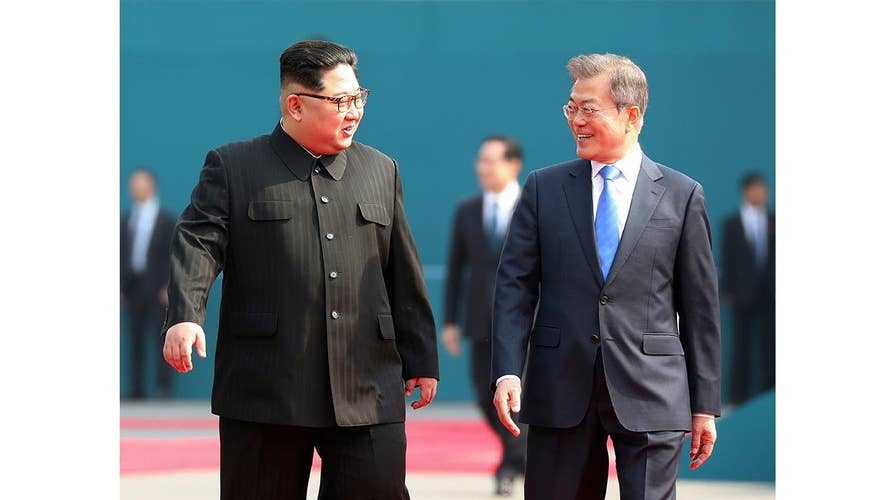At the summit between North and South Korean leaders on Friday, North Korean dictator Kim Jong Un became the third member of Kim dynasty to meet his South Korean counterpart – in this case, President Moon Jae-in. They shook hands and pledged – as their predecessors did – to end hostilities between the two nations and work towards denuclearization of the peninsula.
President Trump was fast to react, tweeting: “KOREAN WAR TO END! The United States, and all of its GREAT people, should be very proud of what is now taking place in Korea!”
How did we get here? Here is a quick timeline of the inter-Korean summits since 2000.
June 2000
The Promise: North Korean dictator Kim Jong Il and South Korean President Kim Dae-jung sign an accord to reduce tensions and work jointly to achieve reunification of the peninsula. They also pledge to work towards a final peace agreement and family reunions.
The Prize: South Korean President Kim Dae-jung receives a Nobel Peace Prize.
The Bribe: Hyundai, a South Korean business group, pays $500 million to North Korea to make the summit happen.
The Results: Two years later, in 2002, a naval gun battle between North and South in the Yellow Sea ends with 34 dead sailors. North Korea walks away from all agreements.
October 2007
The Promise: South Korean President Roh Moo-hyun crosses the demilitarized zone separating the two countries and meets with Kim Jong Il. They sign the second agreement calling for a denuclearization of the peninsula and a permanent peace agreement. They promise to meet more frequently with each other.
The Prize: No Nobel Prize is awarded for the second summit.
The Bribe: South Korea pays more than $100 million in so-called humanitarian and food aid to the North.
The Results: In 2009 North Korea walks away from all deals with the South, accusing it of “hostile intent.” In the same year, North Korea conducts long-range missile tests, launches a satellite and has its second underground nuclear test.
Friday
The Promise: Kim Jong Un and Moon Jae-in promise to end hostilities between the two nations and work towards denuclearization of the peninsula. The two countries say they will work towards a permanent peace agreement to be signed sometime later this year.
The Prize: In May, President Trump is expected to become the first sitting U.S. president to meet with a North Korean leader. Maybe he will receive the Nobel Peace Prize for this attempt.
The Bribe: In a few weeks we will know the final bill for this third summit, and who will pay what.
I hope, that Kim Jong Un – a Western-educated member of the Kim dynasty – has come to realize that this is the end of the road. I hope he will decide to honestly engage to achieve a lasting peace that will bring prosperity to his own people – and perhaps extend his time in office.
But the only person who can guarantee and change the future of this timeline – of all the broken promises and bribes – is President Trump.
It will ultimately be up to President Trump to put in place verifiable and strong monitoring mechanisms that will lead to full denuclearization of the Korean Peninsula.
There will be no fourth North-South Korea summit. The world will soon come to realize that the only option, if this third summit and a U.S.-North Korea summit fail, will be one advanced by National Security Adviser John Bolton last September in an interview with Fox News, before he was in the Trump administration.
Bolton called for an “end the North Korean regime.”
Tony Shkurtaj was the head of the United Nations' and UNDP operations in North Korea from 2004 to 2006. Follow him at @shkurtajt

